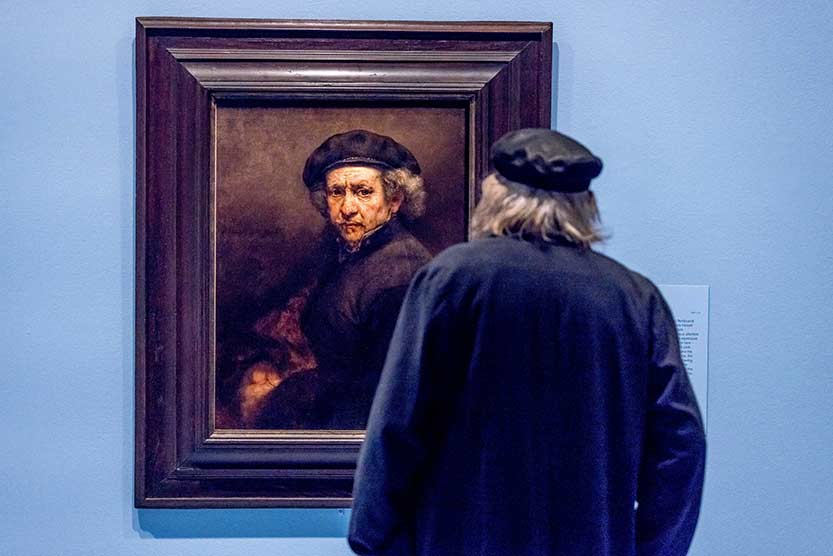A portrait of an enterprising artist
Many of society’s assumptions about artists are expressed in the story told at the new exhibition Rembrandt: True to Life at the National Gallery of Victoria.
Artists in 17th century Amsterdam had to prove themselves just as they do today.
Many of the pressures are exhibited in this show of prints, paintings and artefacts.
As well as setting up a prominent workshop by the canal to promote his brand, Rembrandt wanted to be seen as a connoisseur.
A reconstruction of his cabinet of curiosities is on display, as well as more than 100 etchings and several key paintings from international museums, including his self-portrait.
It is still possible to visit Rembrandt’s house in Amsterdam to see how an artist with both vision and industry set up his life.
One floor was for living, another for receiving customers, another as a workshop where he trained students, charging 100 guilders a year for tuition.
At his prime, Rembrandt was bringing in the guilders for his painting commissions and etchings, which set a record in terms of price.
“He took etching to a new level,” curator Petra Kayser said. “Once you print 50, a plate wears down. Where a lesser artist would abandon it, Rembrandt goes back to the plate and reworks it.”
She said he pioneered methods for creating dark areas, being spontaneous, revealing a sense of drama with the free form working of figures that was quite different to the restrictions of traditional engravings.
In his paintings, he left unimportant areas quite dark and worked roughly on others. “He had a dark, rich expressive style. The impressionists loved him,” she said.
But like all good stories, the fortunes of Rembrandt plummeted. He wasn’t good at maintenance; his house had weak foundations and his painting style went out of fashion.
Personal tragedy also struck with three of four children he had with his first wife Saskia dying, just one surviving to adulthood.
His wife died soon after the birth of their fourth child and his “brand” was tarnished when he was accused of living in sin with the mother of his fifth child.
The curators have done a good job of bringing the person of Rembrandt to light as well as the 100 etchings in the NGV collection.
Rembrandt is an inspiration in how he lived in his life and even though he made religious etchings in the fashion of the day depicting tronies, or character types, he looked beneath the surface of his subject matter.
He made a study of old men in scruffy beards, for example, and did not usually bother with adornments in his portraits even when the trends changed.
An exception was a lovely intimate portrait of Hendrickje Stoffels, his servant, wearing quite an intricate gold gown. Usually his portraits are darker, simpler and less detailed.
It is believed that Hendrickje was Rembrandt’s third girlfriend and mother of his fifth child. They lived together for 19 years in a smaller house, and she must have introduced a few changes.
Rembrandt: True to Life, National Gallery of Victoria, until September 10. •

A new Neighbourhood Watch group for Southbank








 Download the Latest Edition
Download the Latest Edition